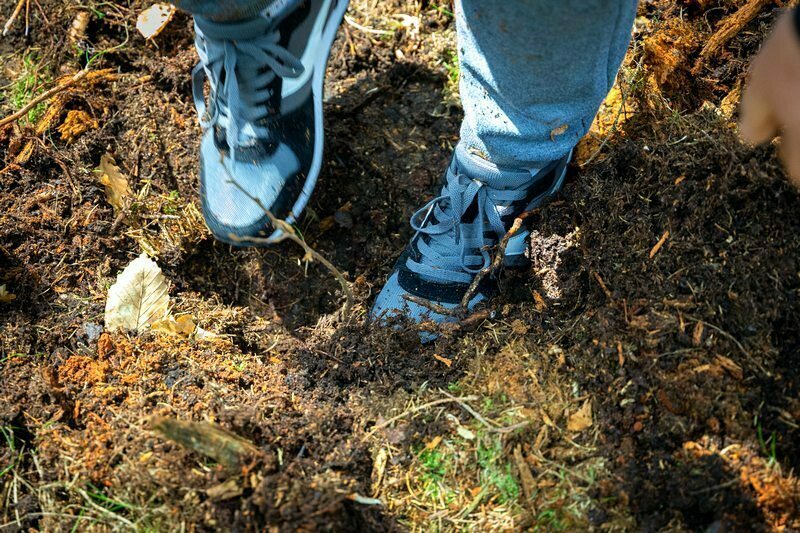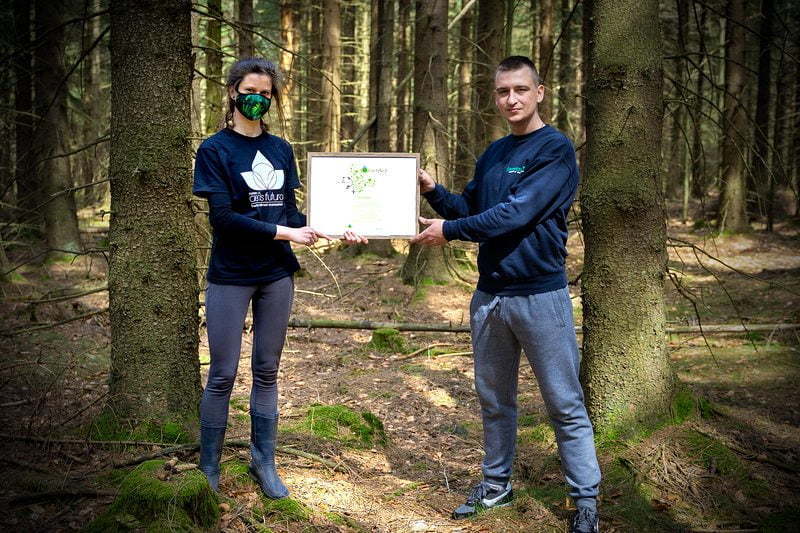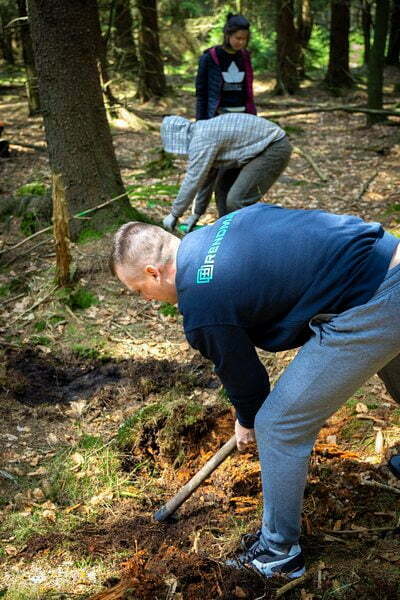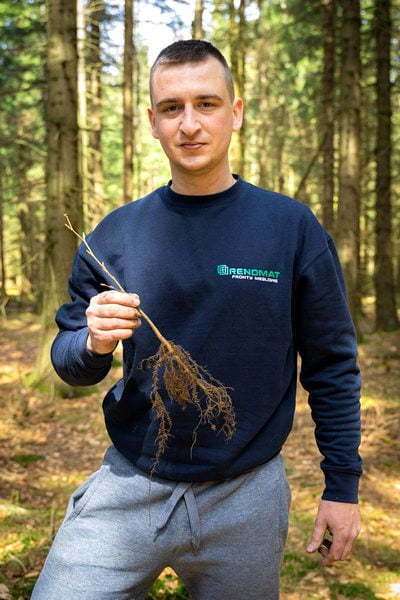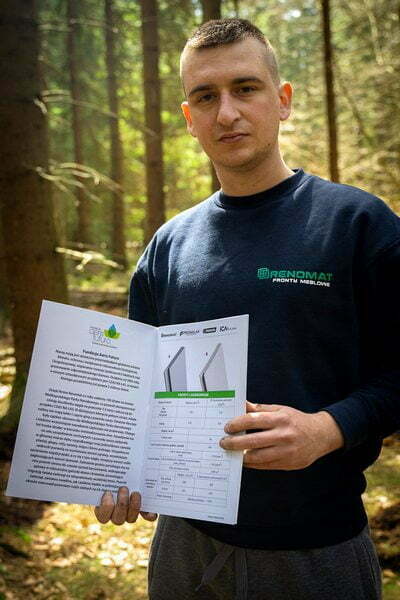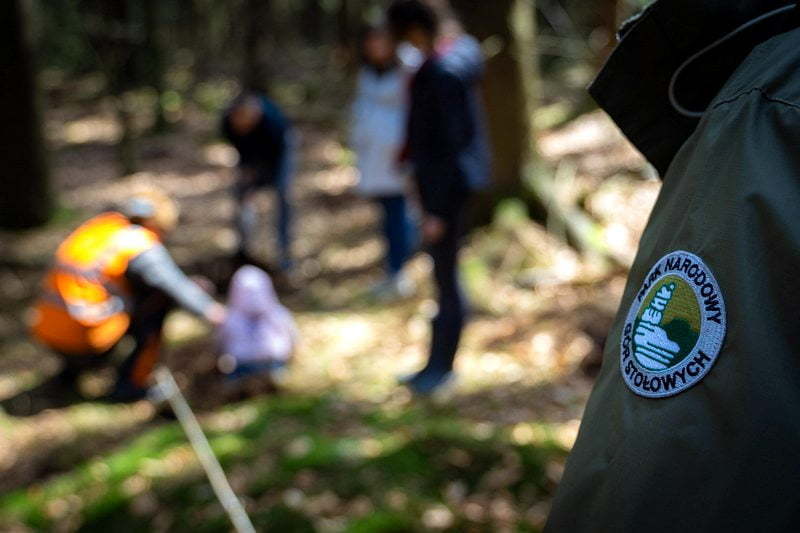RENOMAT – Time for Forest in the Stołowe Mountains

Reconstruction of forest stands to restore their natural character is one of the Park’s primary tasks. We have supported these activities thanks to the Renomat company, with which we planted 100 beech trees in April this year in the Szczeliniec Conservation District, in Stołowe Mountains National Park Branch 40a.
Within the Stołowe Mountains National Park alone, 3 000 hectares are being converted. Spruce trees produce a shallow, disc-shaped root system and lack a taproot. In addition, the layer of soil covering the bedrock in most of the Park’s area is shallow, which causes large losses in stands in the form of windfalls or windrows. Forests are particularly susceptible to this in pre-winter and late autumn, when the soil is heavily saturated with moisture. This causes bark beetle attacks.
Why is it important to plant new trees in Stołowe Mountains National Park?
The Stołowe Mountains National Park, which was established in 1993, is constantly exposed to the mass emergence of the woodworm in the forests. This species of beetle in Poland feeds mainly on common spruce. Healthy trees are attacked sporadically, but the exception is economically transformed forests, especially artificial spruce monocultures. Table Mountain National Park is characterized by the dominance of artificial spruce stands, created as a result of previous human activities. This results in frequent bark beetle gradation in these forests. In areas deforested as a result of the bark beetle, species compatible with the conditions of the habitat are planted, including beech, fir, sycamore and ash.
Reconstruction of forest stands to restore their natural character is one of the park’s primary tasks.
Deciduous trees are being planted in place of damaged spruce trees. The beech tree we planted in April carries a lot of benefits. As a main and admixture species, it is important in shaping the non-reproductive functions of the forest, and with the current climate warming and habitat consequences, its importance is particularly increasing.
Where did the charm of Stołowe Mountains National Park come from?

The park, located near the Czech border, owes its beauty to, among other things, its landscapes, whose characteristic elements are the rock formations of the Stołowe Mountains, mountains of slab-like structure, with sandstone monadnocks that have not been subjected to erosion lasting millions of years.
In the forests of Stołowe Mountains you can meet typical forest animal species such as deer, roe deer, wild boar, but more interesting is the avifauna. In the Park you can meet rare species of owls such as the owl owl or the woolly owl, as well as the black stork,or the hazel grouse.
Many thanks to Renomat for their willingness to do something for the climate and another 100 beech trees on the PNGS grounds!




